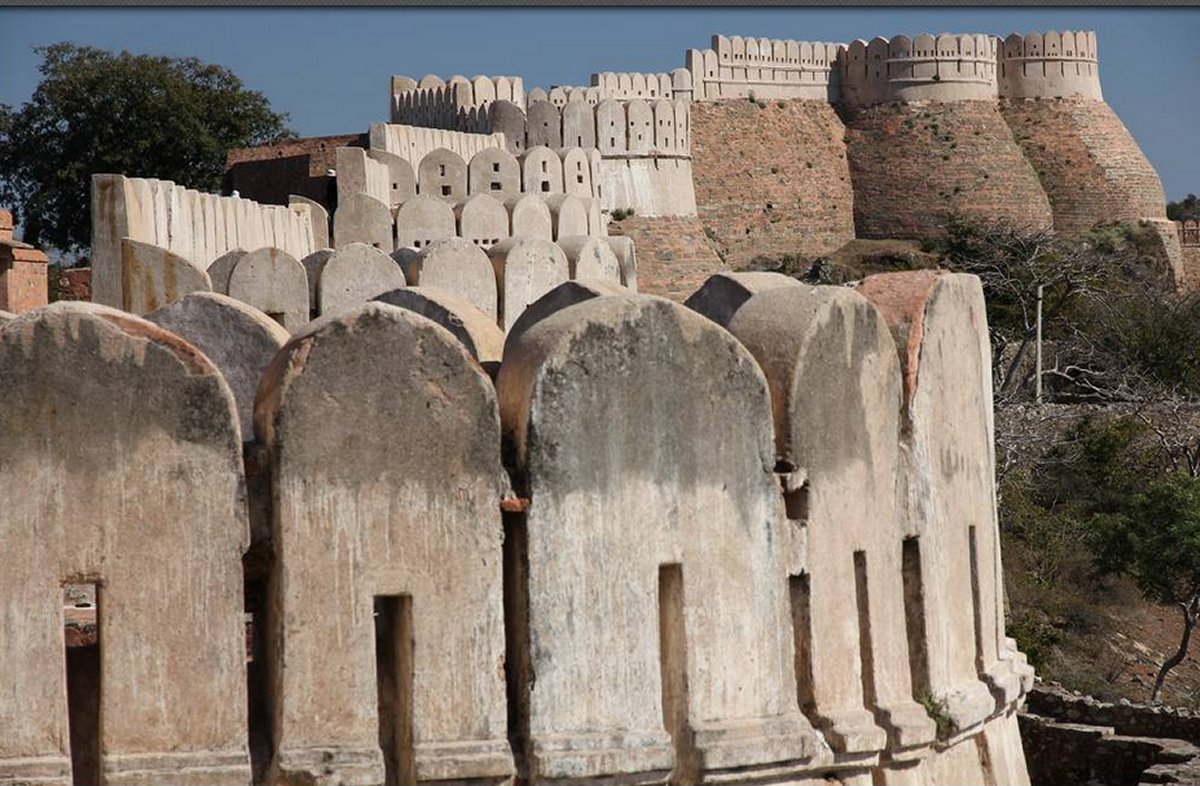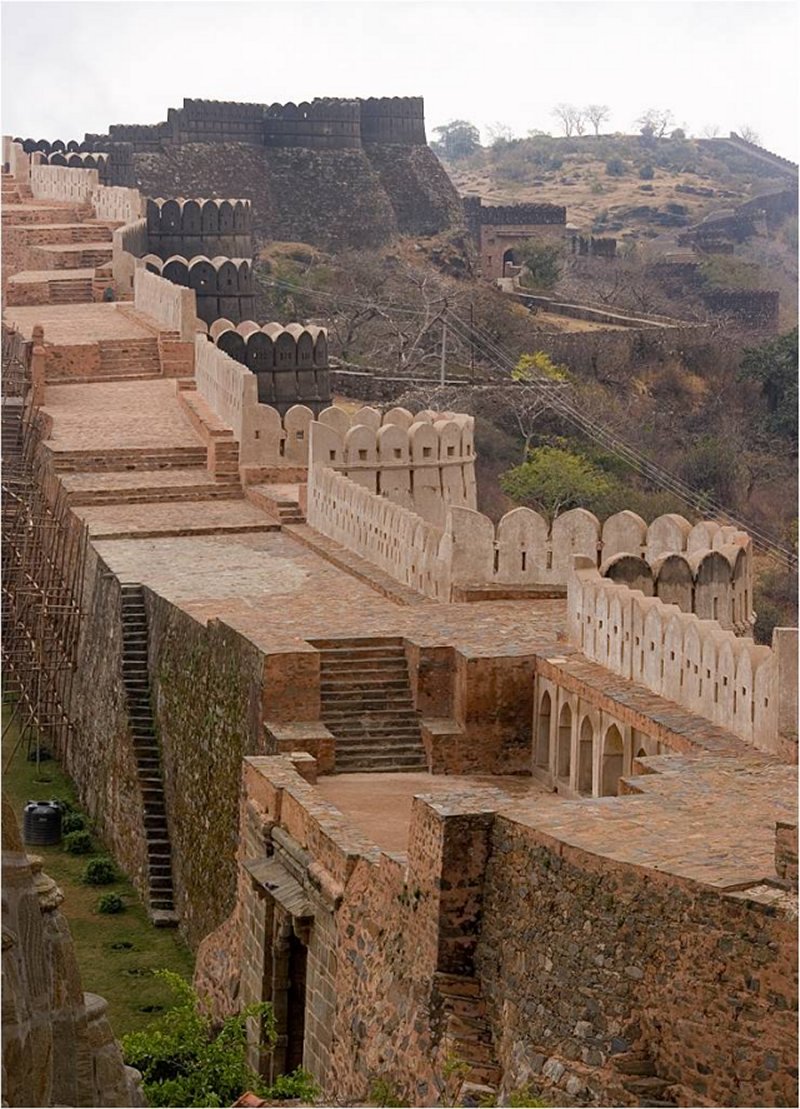MessageToEagle.com – Most people have heard of the famous Great Wall of China, but not everyone knows that in India there is a magnificent ancient structure that is almost identical.
It is called the Great Wall of India and it surrounds the ancient fort of Kumbhalgarh.
The Kumbhalgarh Fort is located in Rajastan in western India. It is a World Heritage Site that was originally built in the 15th century by Rana Kumbha, ruler of Mewar between 1433 and 1468 AD. The ancient fort was later enlarged in the 19th century.

According to legend, in 1443, Rana Kumbha, was initially repeatedly unsuccessful in attempts to build the fort wall. He sought the advice of a spiritual preceptor who was consulted about the construction problems. This spiritual being told the great ruler that a voluntary human sacrifice would solve whatever was causing the obstacle.

Additionally, the spiritual advisor advised building a temple where the head should fall and building the wall and the fort where the rest of his body lay. Needless to say that no-one wanted to be sacrificed and there were no volunteers. One day, after quite some time, a pilgrim volunteered and was ritually decapitated.
Today the main gate of the fortress, Hanuman Pol, contains a shrine and a temple to commemorate the great sacrifice.
According to popular folklore, Maharana Kumbha used to burn massive lamps that consumed fifty kilograms of ghee and a hundred kilograms of cotton to provide light for the farmers who worked during the nights in the valley.
See also:
Vijayanagara – The City Of Devas – ‘The Shining Ones’ – Place Where Mythology And History Coexist
Ajanta Caves: Incredible Accomplishment Of India’s Ancient Stonecutters
Gigantic Kailasa Temple Emerging From A Mountainside: Engineering Marvel Of India’s Master Builders
Surrounded by thirteen elevated mountain peaks, the wall extends over 36 Kilometers around the perimeter of the fort and varies in width from 15 to 25 feet. It consists of thousands of beautiful stone bricks and decorations along the top.
During times of danger, the fort provided refuge for the rulers of Mewar.
The fort remained impregnable to direct assault, and fell only once, when a traitor poisoned the fort’s internal water supply allowing the Mughal Emperor Akbar and forces from Delhi, Amer, Gujarat, and Marwar to penetrate its defense.
The massive wall at Kumbhalgarh took nearly a century to construct and made the fort virtually impregnable.
When you approach Kumbhalgarh you’ll notice there are seven fortified gateways. Within the fort there are over 360 ancient temples. Some of them are Jain and the rest Hindu. From the palace top, it is possible to see kilometers into the Aravalli Range. The sand dunes of the Thar desert can be seen from the fort walls. It is a quite magnificent view.
The Great Wall of India this is the second largest continuous wall on the planet. Yet, despite its magnificence it is still little known to the outside world.
© MessageToEagle.com






